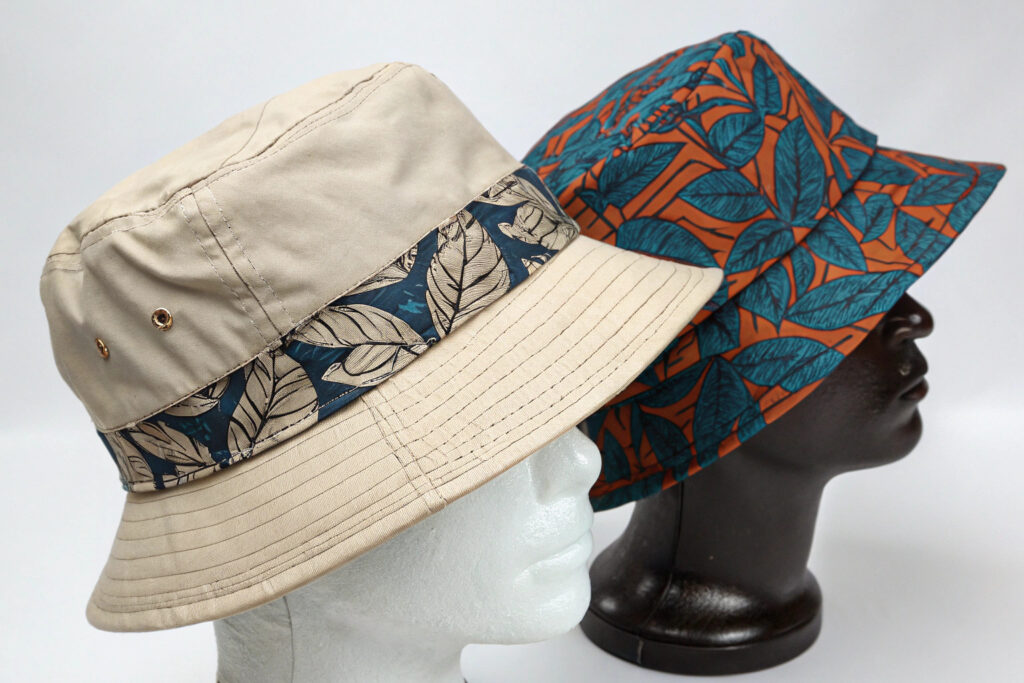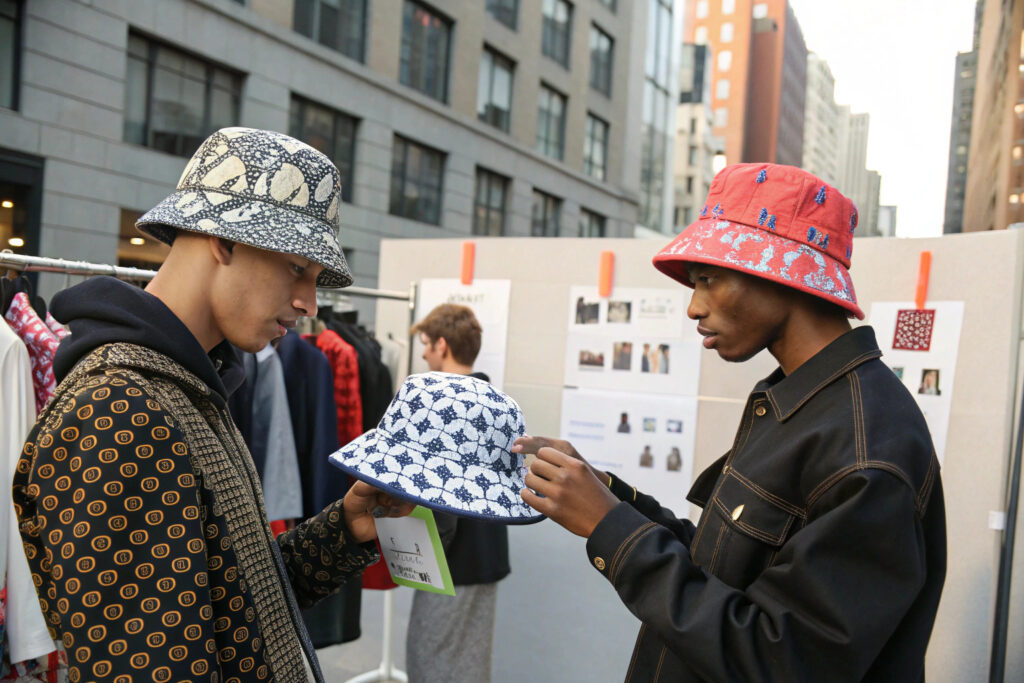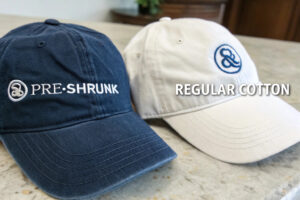Reversible bucket hats have exploded in streetwear fashion, offering versatility and value that resonates with today's style-conscious consumers. However, designing successful reversible headwear involves more than simply attaching two hats together - it requires careful consideration of construction, material pairing, and functional design elements that work harmoniously from both sides.
The key to designing a reversible sun hat suitable for streetwear lies in strategically combining materials, employing innovative manufacturing techniques that hide stitching, achieving balanced and equally attractive design elements on both sides, and incorporating practical details that enhance its reversibility functionality. Successful designs offer two distinct fashion statements in one garment, effectively doubling styling options while maintaining comfort and durability.
This comprehensive guide will walk you through the entire design process for reversible bucket hats, from material selection and construction techniques to streetwear-specific styling details that resonate with modern consumers.
What material combinations work best for reversible designs?
Material selection forms the foundation of any successful reversible bucket hat. The chosen fabrics must not only look good together but also share similar weight, stretch properties, and care requirements to ensure the hat functions properly and maintains its shape when reversed.
Ideal material combinations for reversible bucket hats balance visual contrast with technical compatibility, pairing fabrics that offer different aesthetics while sharing similar weight, durability, and care requirements to ensure the hat functions properly from both sides.

How do you pair fabrics for optimal performance?
Successful fabric pairing involves matching materials with similar weight and stretch characteristics to prevent warping or uneven wear. A medium-weight cotton twill might pair perfectly with a corduroy of similar weight, while a lightweight denim could complement a canvas of comparable density. We've developed a proprietary compatibility chart that matches over 50 fabrics based on weight, stretch percentage, and care requirements, ensuring our reversible designs maintain their shape and functionality through repeated wearing and washing. The most successful streetwear combinations often contrast texture (smooth vs. textured) while maintaining similar structural properties.
Which streetwear fabrics offer the best versatility?
Current streetwear trends favor combinations like technical nylon with vintage canvas, ripstop fabrics with cotton twill, or contrasting denim weights with coordinated color stories. Pattern combinations are particularly popular, with camouflage reversing to solid colors, or graphic prints contrasting with subtle textures. Our best-selling reversible bucket hats pair performance fabrics on one side (like water-resistant nylon) with natural fibers on the other (like breathable cotton), offering both style versatility and functional adaptation to different weather conditions. This approach effectively creates two hats in one, appealing to streetwear consumers who value both fashion and function.
What construction techniques make reversibility seamless?
The construction method determines whether a reversible bucket hat looks like two intentional designs or one compromised garment. Hidden seams, strategic stitching, and innovative finishing techniques separate professional reversible designs from amateur attempts.
Professional reversible bucket hat construction utilizes fully concealed seams, internal reinforcement that works from both sides, and closure systems that disappear when reversed. The goal is creating two complete aesthetic experiences without either side revealing its dual nature.

How are seams hidden in reversible designs?
Hidden seam construction typically uses a combination of French seams and binding techniques that encase raw edges completely. The process involves sewing the hat inside out, leaving a small opening for turning, then hand-stitching the opening closed invisibly. More advanced manufacturers use ultrasonic welding for synthetic fabrics, creating seamless bonds without stitching visible on either side. Our factory has developed a proprietary construction method that uses strategically placed topstitching as a design element rather than a construction necessity, allowing both sides to appear as the "right side" while maintaining durability for streetwear's active use.
What about brim construction and reinforcement?
The brim presents the biggest challenge in reversible designs, as traditional rigid brims cannot be reversed. Solutions include using flexible yet shape-retentive materials like plastic mesh sandwiched between fabric layers, or designing softer, unstructured brims that maintain form through careful pattern cutting. Our most popular reversible bucket hats use a revolutionary brim construction with a thin, flexible thermoplastic insert that can be reversed without cracking or losing shape, combined with perimeter stitching that appears intentional from both sides. This innovation has significantly increased the lifespan of our reversible designs compared to traditional methods.
How should design elements adapt for reversibility?
Designing for reversibility requires rethinking every element from logos and labels to functional features. Each component must serve both sides equally or disappear entirely when not in use.
Successful reversible bucket hat design involves creating two complete aesthetic experiences with coordinated but distinct color stories, strategic branding that works from both perspectives, and functional elements that enhance rather than compromise the reversible nature.

How do you handle branding on reversible designs?
Branding on reversible hats requires innovative solutions like embroidering logos through both layers so they appear mirrored on the reverse side, using jacron patches that can be applied to both sides, or incorporating woven labels into the seam allowance where they're visible only when the brim is flipped up. Our streetwear clients often opt for subtle branding on one side and bold logo treatment on the other, creating distinct fashion statements that appeal to different wearing occasions. We've developed a specialized embroidery technique that uses contrasting thread colors on each side, creating two different logo appearances from the same stitching process.
What color and pattern strategies work best?
The most successful reversible designs use coordinated color stories with one side serving as a neutral base and the other making a bold statement. Pattern combinations might include a solid color reversing to a graphic print, or two complementary patterns that share a color element for cohesion. We recommend maintaining some color continuity between sides - such as using the same color for topstitching on both sides, or having one color from the patterned side appear as the main color on the reverse. This creates intentional design harmony that feels sophisticated rather than random, appealing to streetwear consumers' appreciation for thoughtful design details.
What streetwear-specific features enhance reversible designs?
Streetwear consumers expect specific functional and aesthetic details that align with current trends and practical urban living. Incorporating these elements elevates reversible bucket hats from novelty items to must-have accessories.
Streetwear-enhancing features for reversible bucket hats include adjustable fit systems, integrated storage solutions, technical fabric applications, and details that reflect current urban fashion trends while maintaining the hat's reversible functionality.

How can you incorporate adjustable features?
Traditional buckle adjustments compromise reversibility, but innovative solutions include hidden drawstring systems in the band, elasticated back sections that stretch for fit, or magnetic closures that secure invisibly under the fabric. Our most popular adjustable system uses a hidden cord lock mechanism embedded between fabric layers, accessible through nearly invisible openings on both sides. This maintains the clean appearance streetwear favors while providing the fit customization today's consumers expect. The system allows up to 2 inches of size adjustment without any visible hardware on either side of the hat.
What technical features appeal to streetwear audiences?
Streetwear consumers appreciate technical details like hidden RFID pockets for security, waterproof treatments on one side, UV protection, or integrated earphone ports. We've developed reversible bucket hats with hidden zippered pockets in the crown, moisture-wicking treatments on the interior that work from both sides, and even magnetic accessory attachments for adding patches or decorative elements. These technical enhancements provide practical benefits that justify the premium positioning of reversible designs while aligning with streetwear's appreciation for innovation and functionality disguised as simple fashion.
Conclusion
Designing reversible bucket hats for streetwear requires balancing aesthetic appeal with technical precision, creating two complete fashion statements in one garment. Successful designs combine compatible materials, innovative construction techniques, and streetwear-specific details that enhance both versatility and functionality. The result is headwear that offers genuine value through its reversible nature while maintaining the quality and style expectations of discerning streetwear consumers.
If you're looking to develop reversible bucket hats for your streetwear brand, we at Global-Caps have extensive experience in dual-sided construction techniques and streetwear-focused design. Our technical team can help you create reversible designs that stand out in the competitive fashion market. For assistance with your reversible bucket hat collection, please contact our Business Director Elaine at elaine@fumaoclothing.com. Let's create headwear that doubles your style possibilities.







